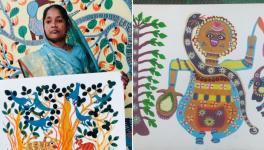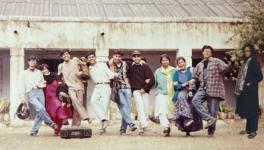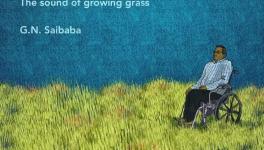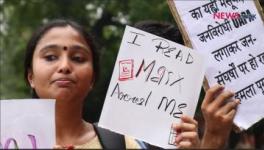'Dissent is a Creative Force, a Powerful Force of Transformation…'
Image courtesy. Drama School Mumbai
Grappling with the idea of dissent, in part two of a two-part conversation with writer Githa Hariharan, theatre director and producer Sunil Shanbag talks about the layers of censorship we are subject to today. He describes dissent as a powerful force of transformation difficult to separate from life itself. He also talks about the different ways of working with a collective in theatre and how language plays a major part in how easily a play travels across a vastly multilingual country.
Githa Hariharan (GH): What, to your mind, is dissent? And how does it bridge your life as a theatre person/filmmaker and citizen?
Sunil Shanbag (SS): Dissent is a creative force, a powerful force of transformation and, to my mind, very difficult to separate from life itself. Art requires you to question, from the banal to the profound. I don’t think I can say this in any other way.
GH: How does the dissent expressed by a particular play performance get tempered by the collective involved – from the playwright (or text) to the director to the actors?
SS: Yes, theatre is collective work, and all such work depends on a series of negotiations. In an ideal situation, everyone involved is pulling in the same direction, and this adds to the richness and diversity of the ideas being expressed. Sometimes the situation is not so smooth. But negotiation can often lead to interesting outcomes which were not imagined in the beginning of the process. When we work with a pre-written text, the ideas are laid out before the process begins. So everyone has to have bought into the text at the very beginning. But in a process which involves devising in some form, not everyone in the room is able to, or willing to, be as open or outspoken as someone else. How does one respond to this? Do we see the unwillingness or inability as an obstacle? Do we see it as a challenge to find creative and respectful solutions? I am familiar with such a situation both in our work and in the work of others, and different people respond differently. I think as long as there is good faith, creative solutions can be found. Also, we have to keep reminding ourselves as artists that a specific piece of work is not the last one we will do! There will be an opportunity to do another, and then another. So we have to learn to relax… it’s never the end of the world.
Also read | “Theatre has the power to provoke, to subvert…”
GH: Does our multilingual condition hinder the travel of “local” theatre within the country? Or do we have instances of adaptation that actually enrich the local?
SS: The awareness of pan-Indian theatre practice in the sixties and the early seventies was mostly built on the strength of translations of plays written in different languages. Translations led to productions, and productions brought different regional sensibilities and ideas to audiences. This was done due to the passion and initiative of individuals who saw themselves as part of a contemporary Indian theatre community. Playwrights translated each other’s plays, these translations were circulated and readings were done. I think this kind of sense of ownership, responsibility, and generosity is critical. The works of the major playwrights of that time are known across the country in translation. When I began doing theatre in 1974 my first play as an actor was a translation of a Marathi play into Hindi, and in the next few years I had worked in translations of plays from Kannada, and Bengali.

From ‘Deewar’
But returning to your question, language does play a major part in how easily a play travels across a vastly multilingual country. It sometimes leads to having to make a choice that is not in sync with the cultural specificity of a play. For instance, the ‘natural’ language for “Cotton 56, Polyester 84” was Marathi, but because my theatre work travels a lot, it was strategic to do the play in a language that was more widely understood. The challenge then was how to retain the essence of Marathi while doing the play in Hindi.
Even in a city like Mumbai where so many languages co-exist, our theatre audiences, and performance spaces, are ghettoised. For instance, there is a distinct audience for Marathi plays, and one for Gujarati, and there are dedicated theatre spaces for plays in these languages. At the same time, plays from each language do get translated and produced in the other, so eventually some plays do reach a larger audience.
But translations need to be published in some manner, shared, and made widely and easily available. That’s a critical task.
GH: You have developed the theme of experiencing and living with censorship in your work. Would you unravel for us the layers of censorship we are subject to today, and also what may be some strategies of resistance?
SS: When we were researching the idea of censorship for “Sex, Morality and Censorship”, we had a long conversation with the playwright GP Deshpande, and he, in his erudite and deeply thoughtful way, opened up the idea for us. Among the many things he said, one particular thing that stood out for us as practitioners was the difference between censorship by formal institutions of the state, and the informal censorship of society and the mob. In the former, there is the possibility of recourse to appeal against an act of censorship. In the latter there is no such possibility. The (moral) censorship of society is insidious and can only be addressed by a long and consistent process of education, and awareness building. But how does one deal with the censorship of the mob? There is no space for rational discussion. Often there are threats of violence, and the law easily bends itself in the name of averting a ‘law and order situation’, thereby strengthening the attackers rather than the artist. This form of censorship is our biggest challenge today. It is actively encouraged and supported with a view to dismantling processes of law and justice. Then there is the murkiness inherent in this form of attack. Often there are other agendas at play. The attack on a piece of art is not about it having offended sensibilities, but a simple case of extortion. Money changes hands and the attack is withdrawn. This kind of cynicism is extremely damaging to the fabric of society and no words can be too harsh to condemn it. Again the reality is that many artists support the idea of censorship. We face this situation in Maharashtra. The theatre scrutiny board is projected as some kind of enlightened and benevolent protector of public morality!

From ‘Words Have Been Uttered’
Historically, theatre practitioners have employed many strategies to get around censorship. Some have to do with their negotiations and engagement with formal institutions. Some are artistic strategies. Some have to do with how they scale their work – which allows them to stay below the radar.
In my own practice, I have seen a relatively liberal phase when it was possible to engage in a public discourse on artistic freedom, and I now see a deeply cynical and intolerant phase in which such an idea has been completely side-lined, and the artistic community is in a state of siege. We have to believe things will change, but only if we survive the moment and find ways to continue to work, without losing our integrity.
GH: The covid pandemic has shown us how important it is to build a sense of community, of solidarity, among cultural practitioners. How do we sustain the efforts that people like you have been involved in? Is there some way we can pressure state institutions to be more supportive?
SS: The pandemic confirmed our worst fears and our belief that state institutions have no real interest in the arts, or artists. The insensitivity to the terrible difficulties faced by artists during the pandemic period is unimaginable. Where some support was given, artists were subject to the worst kind of humiliation and disrespect. One of our premier cultural institutions exhorted artists to celebrate and participate in state sponsored events like Surgical Strike Diwas! All this during the pandemic.
Unless there is space for artists, especially artists who are able to see larger issues beyond their own practice to participate in formal institutions, I think it’s a waste of time trying to work with the state. I understand the argument that these institutions are, by their very public character, obliged to do their duty. But our personal experience of dealing with them has been very poor, and honestly, our time is better spent finding ways to form communities and supporting each other. We have to find, individually and collectively, ways to resist the state’s appropriation of the cultural capital we have built.
Get the latest reports & analysis with people's perspective on Protests, movements & deep analytical videos, discussions of the current affairs in your Telegram app. Subscribe to NewsClick's Telegram channel & get Real-Time updates on stories, as they get published on our website.
























